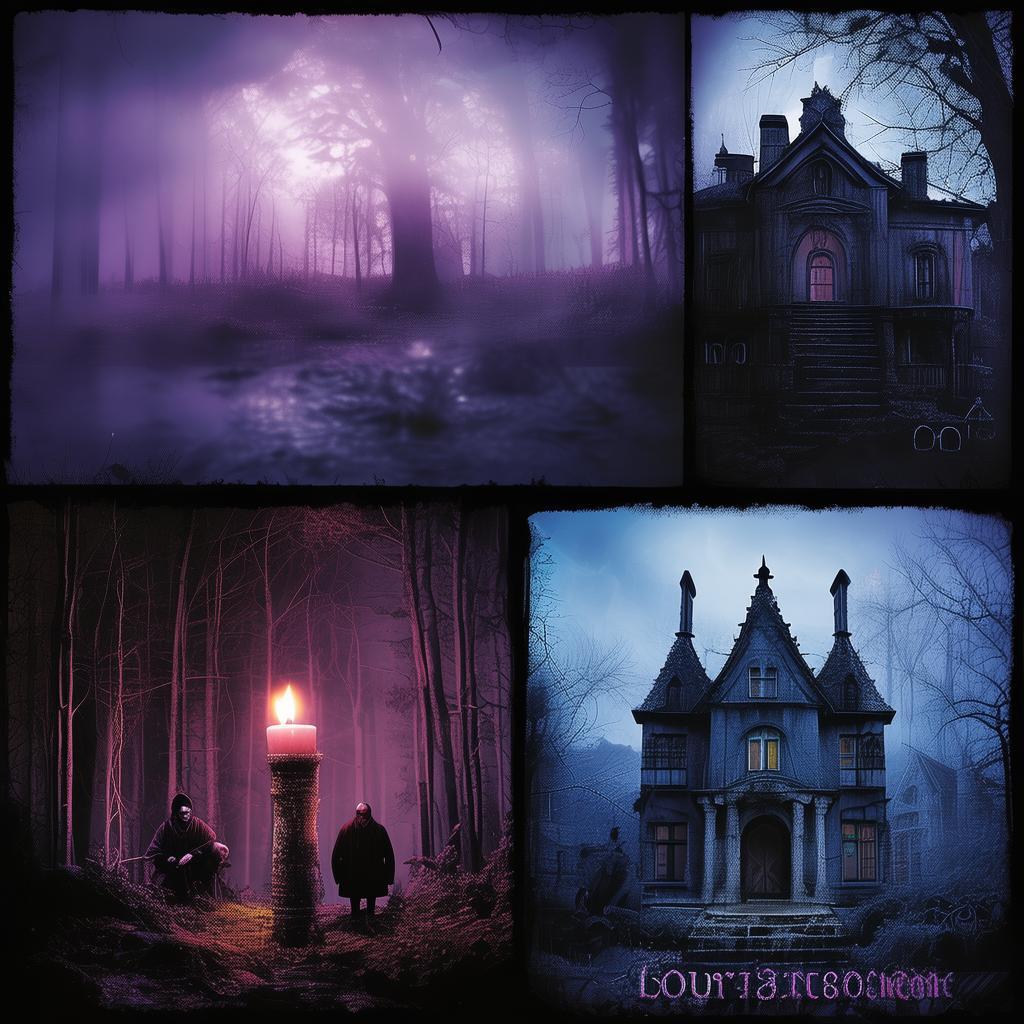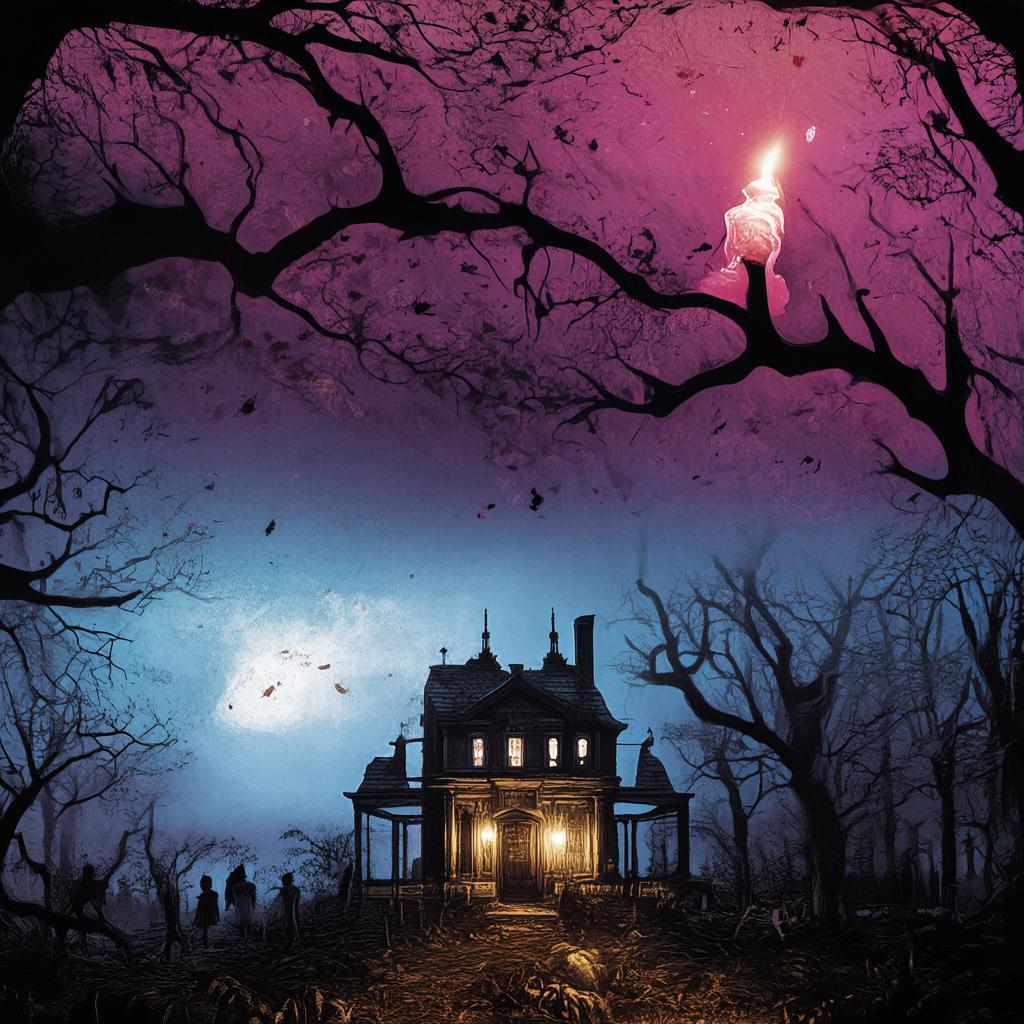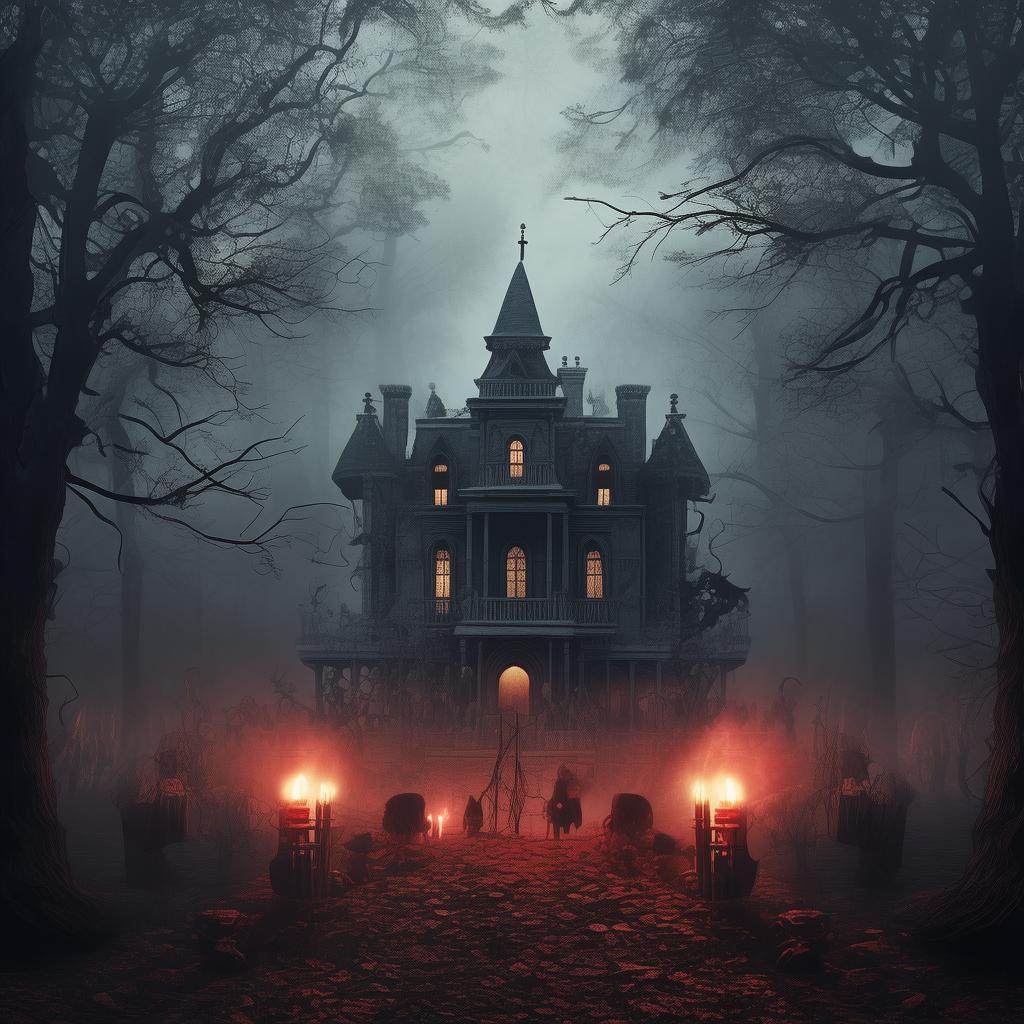The Haunting Echoes of the Screen: Exploring Ghoulish Graphics in Anime
The realm of anime is vast, ranging from the fantastical to the mundane. Yet, there exists a subset of anime that dares to tread where most would fear to go: the land of the ghoulish and the eerie. These haunting episodes are a testament to the power of visual storytelling, where the graphic elements are as much a character as any voice actor or scriptwriter. This article embarks on a journey through the chilling and mesmerizing episodes that employ ghoulish graphics to create a hauntingly beautiful experience.
The Opening: A Mysterious Hook
In the world of anime, the opening moments can make or break a story. For those who delve into the realm of graphic horror, the opening is often an explosive hook, a chilling image that sets the tone for the rest of the episode. Consider the opening scene of "Parasyte," where a young man awakens to find a creature living inside him. The graphic depiction of the creature's invasion is a shock to the system, and from that moment, viewers are drawn into a world where the line between the living and the dead is blurred.
Setting Up Conflict: The Living and the Dead
In anime, the conflict is often rooted in the interplay between the living and the dead. Whether it's a zombie apocalypse, a haunted house, or a ghostly encounter, the characters are forced to navigate a world where the boundaries between life and death are not so clear. "Tokyo Ghoul," for instance, introduces us to the world of ghouls, creatures that look like humans but require human flesh to survive. The main character, Ken Kaneki, struggles to find his place in this world, torn between his human past and his ghoulish present.
Development: The Struggle for Identity
As the episodes unfold, the characters are faced with a myriad of challenges, each testing their resolve and their humanity. In "Gantz," a group of individuals are mysteriously transported to a battlefield where they must fight to the death for unknown reasons. The struggle for survival forces them to confront the darkest aspects of their nature, pushing them to their limits.

Climax: The Unpredictable Turn
The climax of an anime episode using ghoulish graphics is where the unexpected twists come into play. In "Kuroshitsuji," the protagonist, Ciel Phantomhive, seeks revenge against the恶魔们 who murdered his parents. The climax reveals a shocking truth about Ciel's own past, turning the tables on viewers and leaving them breathless.
Conclusion: A Haunting Resonance
The ending of an episode that uses ghoulish graphics is often designed to have a lasting impact on the viewer. "Bleach," for example, concludes with a bittersweet victory for the protagonist, Ichigo Kurosaki. The final moments leave viewers reflecting on the sacrifices made and the cost of the journey, leaving a haunting resonance.
The Characters: A Gallery of Fear
The characters in these anime episodes are often the ones who carry the story forward. They are the faces that viewers come to know and care about. In "Gurren Lagann," the protagonist, Simon, leads his fellow villagers in their quest to break free from the earth that imprisons them. His unwavering determination and courage become the embodiment of hope amidst despair.
The Atmosphere: A Haunting Presence
The atmosphere of these episodes is key to their success. The use of ghoulish graphics, dark color schemes, and haunting soundtracks creates an immersive experience that is both terrifying and mesmerizing. "The Night of the Ghouls" from "Berserk" is a prime example of how visual and auditory elements can combine to create a truly chilling atmosphere.
The Impact: A Call to Reflect
The ultimate goal of these anime episodes is to provoke thought and reflection. They ask questions about life, death, and the human condition. In "Eraserhead," the surreal and nightmarish imagery forces viewers to confront their deepest fears and insecurities, leaving them with a sense of unease that lingers long after the credits roll.
Conclusion: The Power of Visual Storytelling
In conclusion, the use of ghoulish graphics in anime episodes is a testament to the power of visual storytelling. It allows creators to push the boundaries of what is considered acceptable, to delve into the depths of the human psyche, and to create experiences that are both terrifying and beautiful. These episodes are not just entertainment; they are a mirror held up to society, reflecting the darkest corners of our fears and desires. They are a reminder that even in the darkest of times, there is beauty to be found, and that the line between the living and the dead is not as firm as we might believe.
✨ Original Statement ✨
All articles published on this website (including but not limited to text, images, videos, and other content) are original or authorized for reposting and are protected by relevant laws. Without the explicit written permission of this website, no individual or organization may copy, modify, repost, or use the content for commercial purposes.
If you need to quote or cooperate, please contact this site for authorization. We reserve the right to pursue legal responsibility for any unauthorized use.
Hereby declared.









